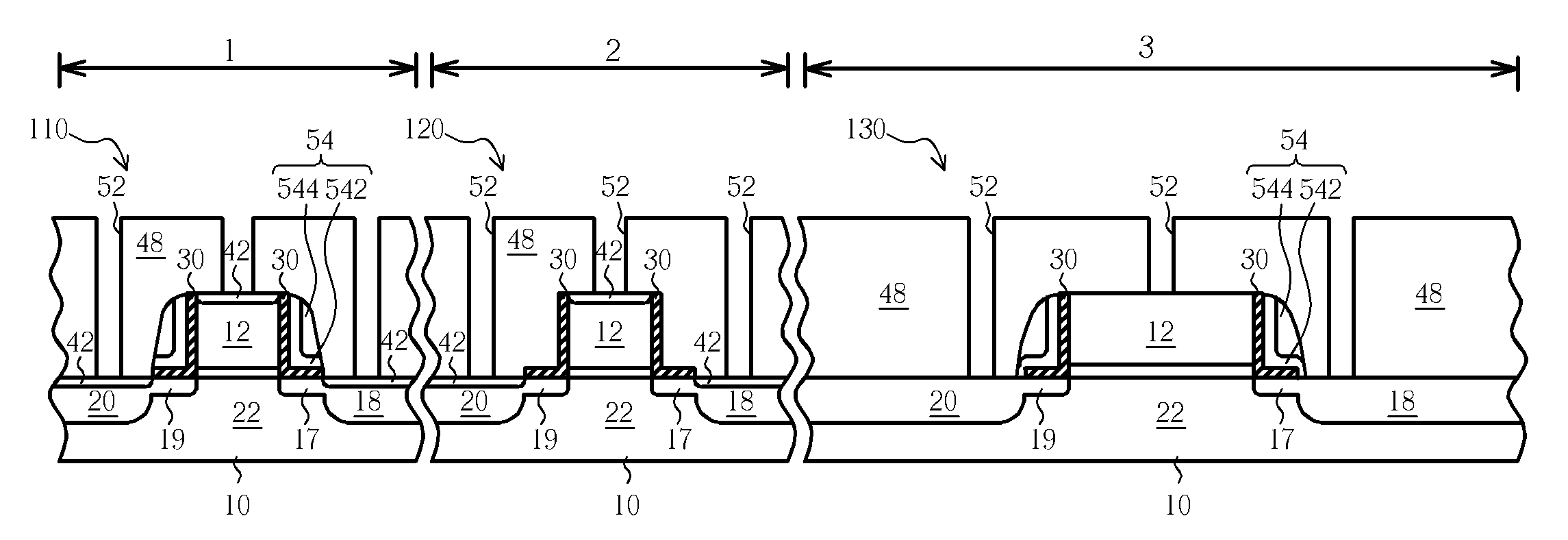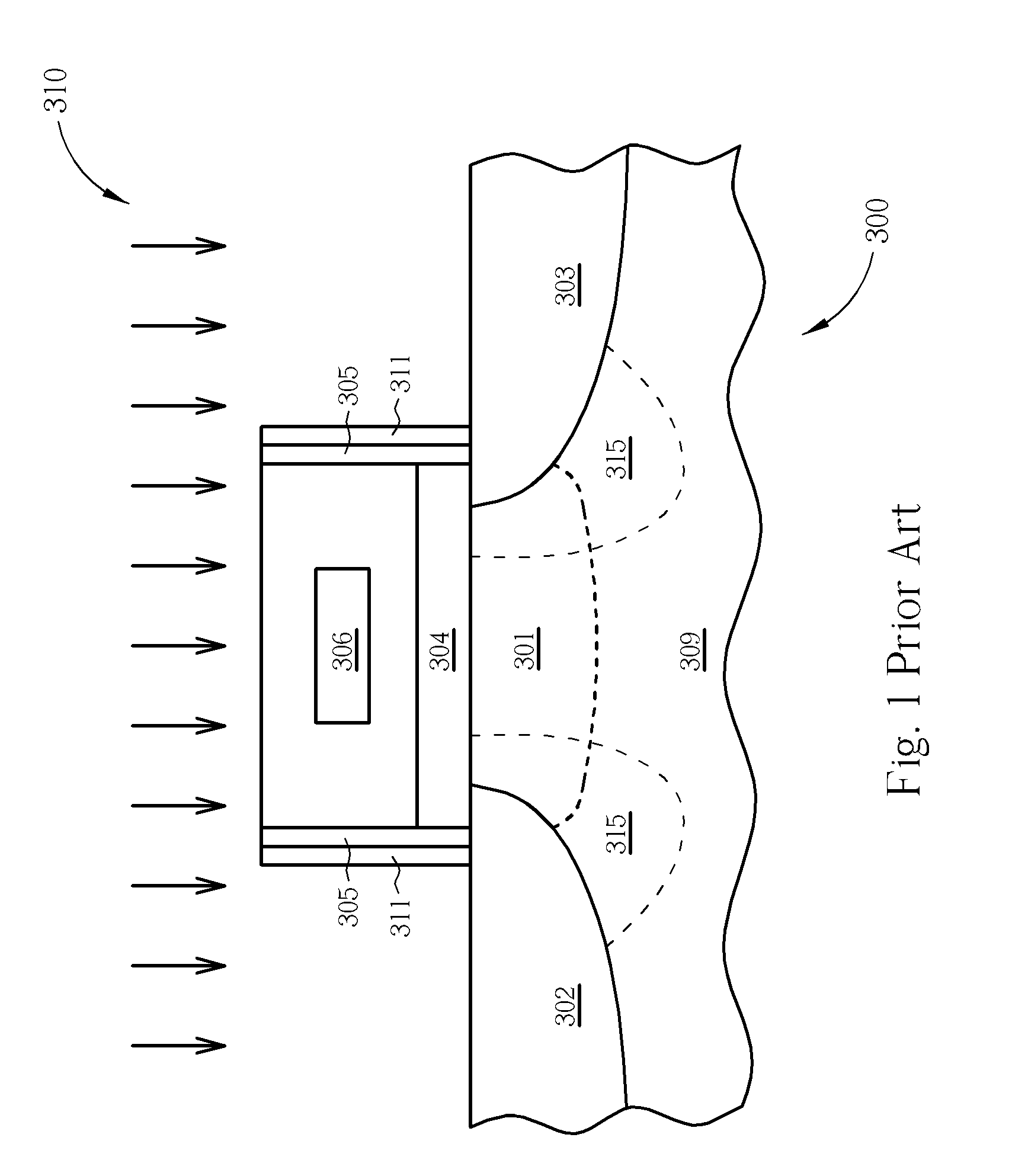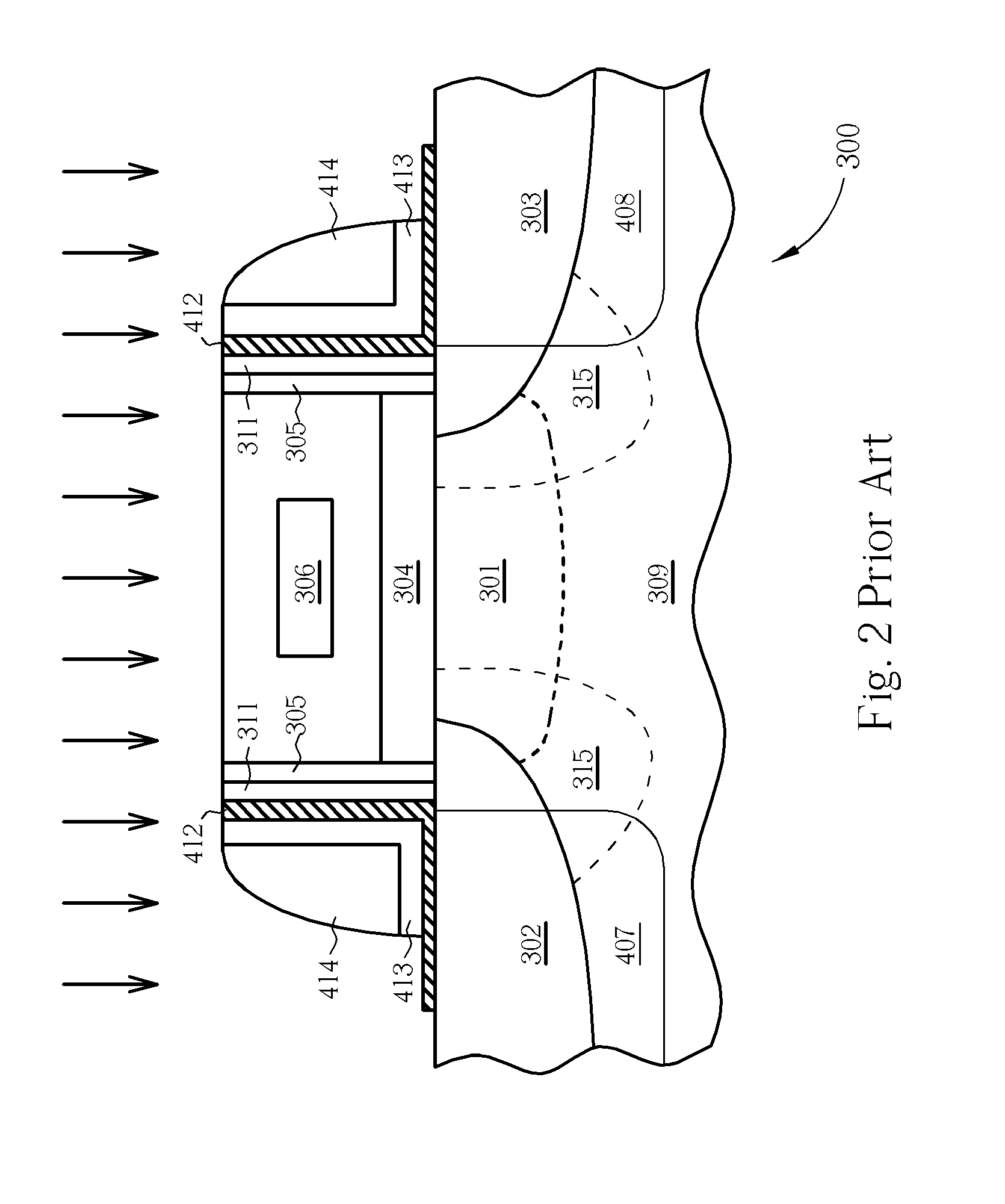Metal-oxide-semiconductor transistor and method of forming the same
a technology of metal-oxidesemiconductor and transistor, which is applied in the direction of semiconductor/solid-state device manufacturing, semiconductor devices, electrical equipment, etc., can solve the problems of pmos composite cap b>516/b> the loss of net boron dopant in the channel, and the inability to apply pmos composite cap 516 in the prior art method, etc., to achieve the effect of developing the performance of mos
- Summary
- Abstract
- Description
- Claims
- Application Information
AI Technical Summary
Benefits of technology
Problems solved by technology
Method used
Image
Examples
Embodiment Construction
[0023]Please refer to FIGS. 7-13. FIGS. 7-13 are schematic cross-sectional diagrams illustrating a method of fabricating MOS transistors in accordance with a first preferred embodiment of the present invention, wherein like number numerals designate similar or the same parts, regions or elements. It is to be understood that the drawings are not drawn to scale and are served only for illustration purposes. It is to be understood that some lithographic and etching processes relating to the present invention method are known in the art and thus not explicitly shown in the drawings.
[0024]The present invention pertains to a method of fabricating a MOS transistor used in integrated circuits, such a N-type MOS (NMOS) transistor, a N-type MOS (PMOS) transistor or a complementary MOS (CMOS) device. For detailed description, processes for MOS transistors in different regions are demonstrated through FIGS. 7-13. As shown in FIG. 7, a semiconductor substrate 10 is prepared. The semiconductor su...
PUM
 Login to View More
Login to View More Abstract
Description
Claims
Application Information
 Login to View More
Login to View More - R&D
- Intellectual Property
- Life Sciences
- Materials
- Tech Scout
- Unparalleled Data Quality
- Higher Quality Content
- 60% Fewer Hallucinations
Browse by: Latest US Patents, China's latest patents, Technical Efficacy Thesaurus, Application Domain, Technology Topic, Popular Technical Reports.
© 2025 PatSnap. All rights reserved.Legal|Privacy policy|Modern Slavery Act Transparency Statement|Sitemap|About US| Contact US: help@patsnap.com



